QUALIFYING FOR KONA
Ron Saetermoe
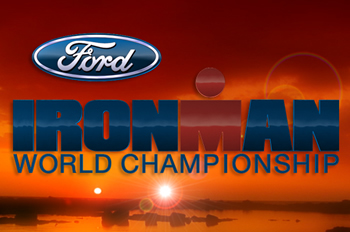 Since I’ve just qualified for the Ironman World Championships in Kona I certainly don’t consider myself an expert on the subject but I might be able to give those of you that share my dreams some advice that may help. Much of this is what I have learned through my readings, interviews with successful Ironmen and my own experience. Let me know if this helps.
Since I’ve just qualified for the Ironman World Championships in Kona I certainly don’t consider myself an expert on the subject but I might be able to give those of you that share my dreams some advice that may help. Much of this is what I have learned through my readings, interviews with successful Ironmen and my own experience. Let me know if this helps.
1. Don’t be in a hurry. Most of us are mere mortals and won’t be able to put together an Ironman qualifying time in a couple short months. Yes, there are those few, and you do hear the stories, of people that were world-class runners or cyclists that manage to qualify quickly but that simply isn’t the story for most of us. My quest started in 2007 with my training for my first race in 2008. I then qualified in 2010.
2. Aging up is great! Depending on where you are in your age group, one way of getting to Kona is simply waiting out the other guys. It’s never easy but at Ironman Hawaii 70.3 there were 172 men in the 35 – 39 age group, there were 47 in mine (55 – 59). The odds definitely improve as you age.
3. Train your tail off. I doesn’t matter what age or sex you are you simply can’t avoid the hard work. You’re probably going to have to train 20 or more hours per week during your race/peak phase of your training – and it needs to be quality training at that. Build up to that volume slowly but you need to put in the miles.
4. Work on your limiters. For me, my limiter was always the bike. I was usually in the top 10% of swimmers, top 20% of runners but in the bottom 50% of cyclists. And since the bike portion of most races is 50% or more of your total time (including Ironman) the answer was obvious. I got myself a CompuTrainer and learned to love it.
5. Dial in the nutrition. We all talk about it but few of us take it all that seriously. Often, we simply talk to someone else and blindly do what they do. I really think you need to figure this out for yourself, and try different things. For me, it’s hard to consume anything solid when I’m riding or running hard so my solution was Infinit. But before I tried it in any of my races I used it a lot in my training. For me, it works.
6. Pick your race carefully. Since I still only consider myself to be an “okay” cyclist now I picked Ironman Arizona as my “A” race for 2010 because the bike portion is fairly flat. A bunch of my mates signed up for Ironman St. George and as much as I wanted to join them I knew that race wasn’t for me. Try to find a race that suits your strengths. If you’re a strong swimmer try to find an ocean race where they don’t allow wetsuits. If you’re a strong cyclist look for a bike course with a lot of hills. If you’re a strong runner look for a hilly run course.
7. Boost your confidence. Because of all my hard work I reached the podium in 2009 nearly every time I raced. Of course, most of the races were smaller, local races but I became a regular on the podium. As your performance improves so does your confidence. Now when I race I fully EXPECT to podium!
8. Get the right equipment. Perhaps more than the actual performance improvement, your equipment helps you gain confidence as well. I got myself a new slippery wetsuit (Quintana Roo Superfull), I got myself a new bike (Cervelo P3) and I got some new running shoes (Asics Kayan). All three fit me well and I feel more confident racing with them.
9. Select good advice. Get advice from everyone but use what works for you. For example, one athlete I know eats as much as possible during every race, so that was his advice. That doesn’t work for me so I tried something that does. Parse through the advice and try everything – BEFORE, not DURING the race.
10. If all else fails, enter the lottery. I entered the Kona lottery three times and never got in. A friend of mine got in three times on the lottery! Now I’m glad that I didn’t get in on the lottery because this means more. Oh, I would have gone, but this way is so much better.
I hope this helps. If your dream of making it to Kona one day is a priority for you, you will certainly make it there. Best of luck!
HOW DOES IT FEEL?
Ron Saetermoe
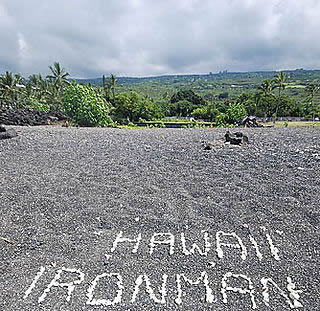 Like a lot of people, I saw Julie Moss on ABC’s Wide World of Sports in 1982 and was just astonished at what I was seeing. This incredible woman simply wasn’t going to stop for anything without finishing the Ironman. The challenge of the event and the drive of that woman inspired so many of us to tackle one of the hardest endeavors in sport.
Like a lot of people, I saw Julie Moss on ABC’s Wide World of Sports in 1982 and was just astonished at what I was seeing. This incredible woman simply wasn’t going to stop for anything without finishing the Ironman. The challenge of the event and the drive of that woman inspired so many of us to tackle one of the hardest endeavors in sport.
I was coaxed into doing my first triathlon in 1983. I had no experience, training or even a bike at that point. I signed up and have been doing them ever since. And while not “age group competitive” I never forgot about Julie and the Ironman.
The longer I was competing in triathlon the more serious thought I gave to doing my first Ironman. The problem was, like many of us, my family and career took the front seat while triathlon took a back seat. And while I still had the dream, I never felt like I was sacrificing anything by not doing my first Ironman.
As my son grew and my business required less of my time day-to-day I was able to increase my training. I started to become more competitive in my age group in sprint and Olympic distance triathlons, so I decided to try my first half Ironman distance race: Vineman, in 2003.
I did okay in that race but realized I really liked the longer distances as well. Going fast was fun, but going long was challenging.
I kept training for the longer stuff and kept improving my performance. I got my first podium finish in 2003 at the Newport Beach Triathlon. What a great feeling!
My breakthrough year was probably 2007. I podiumed three times in triathlon that year and signed up for my first Ironman: Ironman Coeur d’Alene.
Now my training sessions got longer and I spent a lot of time trying to calculate my finishing time and placement in my age group. At least the time spent training would be worthwhile.
Well, after that race I definitely had the Kona bug. I wanted to get to Kona and would genuinely focus my efforts on that goal. I was realistic but for me qualifying for Kona was one of those audacious goals you set for yourself.
I knew my best opportunity would be after I “aged up” to the 55 –59 age group because I still needed a lot of base training and experience. So I continued to train and race and get the best advice from experienced Ironman all around me.
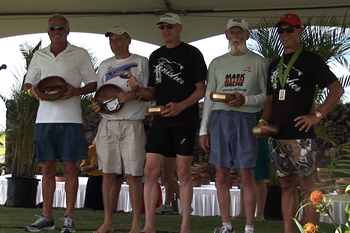 My goal for 2010 was to compete at Ironman Arizona (for the third time) and get my Kona slot there. However, because I did so well at Ironman California 70.3 I figured I’d better find another qualifying race that might allow me to “punch my ticket” this year. That was Ironman Hawaii 70.3 (Honu) for me.
My goal for 2010 was to compete at Ironman Arizona (for the third time) and get my Kona slot there. However, because I did so well at Ironman California 70.3 I figured I’d better find another qualifying race that might allow me to “punch my ticket” this year. That was Ironman Hawaii 70.3 (Honu) for me.
It took a lot for me to get my Kona slot. Tons of training, experience and a little luck. A 25+ year dream come true. Just like Dudley Moore’s response when the flower shop owner asked him “How does it feel to have all that money?” my response is the same: It feels great!
Cheers!
RACE REPORT: IRONMAN 70.3 HAWAII
Ron Saetermoe
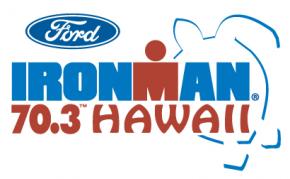 If you’ve been keeping up with your Triathica Weekly reading you’ll know that I just competed in the Ironman 70.3 Hawaii on Saturday, June 5th. I didn’t have this race on my schedule but when I took second at the Ironman 70.3 California I thought I’d better seize the opportunity to try to qualify for Kona.
If you’ve been keeping up with your Triathica Weekly reading you’ll know that I just competed in the Ironman 70.3 Hawaii on Saturday, June 5th. I didn’t have this race on my schedule but when I took second at the Ironman 70.3 California I thought I’d better seize the opportunity to try to qualify for Kona.
I probably jinxed it by saying I was going to the race with the intention of qualifying for the Ironman World Championships but what the heck! That was my plan.
I checked out all of the competitors in my age group (M55-59) ahead of time so I’d get some idea of what I was up against. If/when you get to a place where you’re trying to qualify as well you’ll know why. Anyway, the guy that I figured would win is a guy by the name of Kevin Moats.
The good thing is that Moats already has his Kona slot because he won the Ironman World Championships last year so you get an automatic entry the next year. So, I figured I’d need to finish second to him (sounds easy, right?).
I went to www.athlinks.com and checked out as many of the competitors as I could and knew the competition would be stiff but I thought if I could put together another great day I could do it.
Then, I got some bad news. A friend of mine, Gary Clendenin, told me that Charlie Brockus somehow got into the race AFTER it was announced it was sold out. Fair? Don’t know, but Charlie is a perennial favorite.
Oh well, at some point you TRY to forget about all that stuff and just “leave it all out there on the course.” That was my plan.
Pre-Race
I was very fortunate to have Oguz Yildiz and my 15-year old son Steven with me on this trip. It sure makes it more fun when you’ve got company. It would be a short trip with us only staying three nights. Didn’t matter, we were on a mission!
We got in Thursday and took our time getting to the Hapuna Beach Prince Hotel. Nice place and right on one of the best beaches on the Big Island. I would definitely go there again. I carbo-loaded Thursday night, which is my normal day to do it for long races (two nights out from race day). I don’t like loading the day before because I feel heavy and bloated.
Friday was one hectic day! Ideally, before a big race you stay off your feet as much as possible. We certainly didn’t do that. Had a swim in the morning, went to registration, picked up the bike, went for a ride/run with Al Gaspari, grocery shopping, went to the swim start/T-1, etc. Not restful or relaxing at all!
I managed to get to sleep around 9:00 p.m. (12:00 p.m. PST) and slept until 2:15 a.m. Five hours – not too bad. Got out of bed at 4:00 a.m. and had my breakfast (OJ, English muffin with peanut butter and jelly, yogurt with some blueberries and walnuts mixed in).
Oguz and I headed down to the swim start at 5:00 a.m. while Steven slept. I got my tires pumped up, gear sorted out and went down by the swim start to stretch and get nervous.
Race morning was windy. Hapuna Beach is usually flat in the morning this time of year but we wouldn’t have that luck today. It wasn’t bad, but it was choppy.
The Swim
I went out for a quick warm-up in my brand new Tyr Sayonara speed swimsuit, which I would only use once because the rules change September 1st and they won’t be legal after that. I looked fast and felt fast! As I got out I looked at my watch and it was dead! Uh oh! Oguz quickly gave me his watch and although it didn’t have a heart rate function would still keep time. Problem #1 of the day. (There would be more.)
This is a mass, deep-water start with about 1,300 competitors, including the pros, who started with us. I seeded myself wide left for the clockwise course because a guy I met in the jacuzzi the day before told me this would be beneficial because of the current. Heck, I don’t know so I followed his instruction.
We treaded water for about five minutes before the gun went off – which was before I could start Oguz’ watch. Oh well, I wouldn’t have my swim split. No biggie! Problem #2.
I felt like I was swimming fast and really felt good. Maybe I should have swum so I didn’t feel good! Anyway, for those of you that have swum with over 1,000 of your closest friends, you know how rough these swims can be. There was all of the normal thrashing and kicking. I had to swim over a guy because another guy was cutting me off and he tried to kick me. Why do people do that? I’m not trying to swim over him.
I got about ½ through the swim and got kicked in the face and it knocked my goggles halfway off. I had to stop briefly and put them back on. Problem #3.
I finished the swim and felt good about it. Who do I see just ahead up the ramp to T-1? Charlie Brockus. I tap him on the shoulder and congratulate him on a good swim. No comment or reaction. This dude is focused!
I figured my swim time was pretty good because Charlie had the fastest swim split at this race last year. The problem is that I didn’t know where Moats was. You see, my buddy, Russ Jones, thought I should try to get out ahead of him on the swim and try to see if I could hang on with him on the bike. Nothing doing today, he was ahead of me already.
I keyed on Charlie because he was the only one other than Moats that I knew in my age group. I beat him out of T-1 so I felt good about that.
The Bike
My plan on the bike was to go harder than I did at Ironman 70.3 California. There, I averaged 192 watts. I figured I could manage 195 watts because I was in better shape and a couple pounds lighter. I also averaged 198 at the OC Duathlon but that was less than ½ the distance.
 I started out hard on the bike because I knew the competition would be formidable, and Charlie was just behind me. Well it certainly didn’t take long because Charlie blew by me about three miles into the bike. Wow! I would never see him on the bike again all day.
I started out hard on the bike because I knew the competition would be formidable, and Charlie was just behind me. Well it certainly didn’t take long because Charlie blew by me about three miles into the bike. Wow! I would never see him on the bike again all day.
The wind seemed to die down for the first leg, which started south on the Queen K, which was very welcome. I was fast on the first leg and didn’t have too many people pass me. BTW, they don’t stamp your age on your calf for this race so you can’t tell how old the competitor is in front of you. I HATE that!
I was pushing hard on the bike and wasn’t sure I could hold my pace but pressed on. As I made the left on the road to Hawi the wind seemed to pick up. And the closer we got to Hawi the stronger the wind got, and it was all up hill!
It was probably about 10 miles or so into the bike leg that my pal Al Gaspari passed me. He gave me a few words of encouragement as he blew by me. Al’s got the biggest damn calves I’ve ever seen!
I continued to check my heartrate (my Ergomo computer has heart rate function), my speed (which was disappointing) and my watts. I was averaging 215 watts heading into Hawi! Slow down big guy, you’re cycling waaaaaay over your head!
The turn before Hawi isn’t the same as the world championship. We turn a bit earlier but it is still hallowed ground to me.
Now we were going downhill and with the wind. It was great!
One thing I notice about most triathletes is they tend to coast going downhill. While it is a good time to take a little rest it’s also a good idea to keep your legs turning over so they don’t cramp. Also, I like to keep my watts up as much as possible so I don’t have a lot of peaks and valleys in my effort. Having said that, I do tend to “spin out of my pedals” occasionally and have to coast.
I could tell I was really getting fatigued on the bike. My watts had dropped to 205 and my heart rate stayed right at 160.
So I’m nearing the right turn to head back to the Fairmont Hotel and T-2 and a bee somehow gets into my cycling jersey (which was zipped up) and it stings me in the chest and then stings me in my stomach where it leaves it’s stinger. Naturally, I’m weaving all over the place trying to stop the pain and a guy from my age group passes me and asks if I was stung. “Yep.” He tells me that he’s done for the day if he gets stung because he’s allergic. Lucky me, I’m not. Is that problem #3 or #4? #4 I guess.
T-2 was fast, as usual. I’m pretty good at transitions.
The Run
I was dog-tired starting out on the run and it was getting hot! The entire venue for this race is great but difficult. The run takes place on the roads and golf course in and around the Fairmont Hotel.
It’s kinda cool in a way to be running on the fairways and cart paths of a golf course but I can tell you that running on that spongy grass isn’t fast!
The other thing about the run course is that it’s hilly! Seems like there are very few spots on the course that are flat and after 56 miles on the bike I’d kinda like some flat. Not going to happen.
One of the great parts of the run course is that there are a lot of “out and backs” which gives you the opportunity to see who’s in front of you.
I guess I’m about four miles into the run and come to one of the out and backs and I see old Charlie (you can’t miss his HUGE moustache). His head was down and he was really focused now. He passed a sign and I checked my watch. I checked the time again as I passed it. He was 2:15 ahead of me.
Shortly after that I passed Al. He was struggling. He asked about Charlie and I told him I’d need to make up 15 seconds each of the next nine miles in order to catch him. It would be tough but I thought I could do it if I was patient. The being patient part would be the hardest part for me.
Since I didn’t have access to my heartrate I had to go by feel. I knew my heart rate was elevated from lack of sleep, the heat and the humidity but I also knew I was running much slower than the 7:30 pace I thought I could hold.
The next time I saw Charlie I checked spread again. Guess what, now he was only 1:30 ahead of me. I was closing on him just as I planned.
Every rest stop I doused myself with cold water and drank either Gatorade or Coke and took a cup of ice and tossed half of it down the front of my shirt and half down the back. After a few times I couldn’t even feel the ice!
I guess it was about mile nine as I was approaching a big hill on the golf course and whom do I see walking up? Yep, Charlie. Guess whom else I see? Oguz with his video camera. He’s about to document my pass. Very cool!
As I passed Charlie I patted him on the shoulder again and told him he was doing great. Again, absolutely no response.
The last several miles of the run course are on a false flat. In other words, you’re running uphill. My final split was very slow but Charlie wasn’t going to come back to challenge.
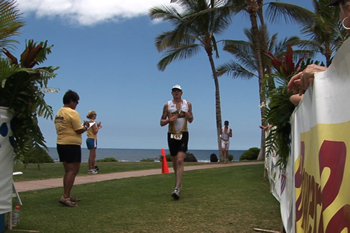 I guessed that Moats was done by now but I had no way of knowing if there was anyone in 2nd place because I didn’t know any of the other guys. I crossed the finish line in 5:19:14. What a disappointment! But, would it be enough?
I guessed that Moats was done by now but I had no way of knowing if there was anyone in 2nd place because I didn’t know any of the other guys. I crossed the finish line in 5:19:14. What a disappointment! But, would it be enough?
Oguz met me at the finish line and I needed to sit down so I found a massage table that wasn’t being used and kicked off my shoes. I was so tired I couldn’t even make my way to the results board to see how I did, even as much as I wanted to know.
Oguz was on the ball and pulled out his iPhone. I took 3rd! Oh no! Moats was first and Nicholas Kaiser was 2nd! I was crushed! I missed by one spot! Crap!
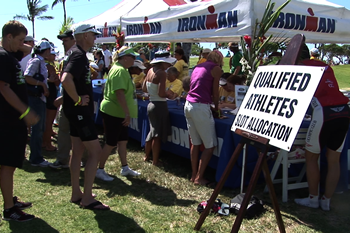 Then it occurred to me that there are a total of 44 Kona slots for the residents of the Hawaiian Islands. Kaiser doesn’t sound Hawaiian but Oguz pulled up his detail. He’s a Honolulu resident! As tired as I was I screamed and yelled as loud as I could. There were a ton of people around and one of them said, “He’s got his Kona slot!” Everyone knew it.
Then it occurred to me that there are a total of 44 Kona slots for the residents of the Hawaiian Islands. Kaiser doesn’t sound Hawaiian but Oguz pulled up his detail. He’s a Honolulu resident! As tired as I was I screamed and yelled as loud as I could. There were a ton of people around and one of them said, “He’s got his Kona slot!” Everyone knew it.
Post Race
I was basking in my dream come true after the race. We had to hang around so we ate and drank and worked on our tans. I would have to enter the roll-down at 2:30 in order to claim my spot and the awards ceremony was at 4:00 and the roll-down at 4:30. They missed ALL of their projected times but I was too happy to care.
 I collected my award and congratulated the other podium finishers and then collected my slot.
I collected my award and congratulated the other podium finishers and then collected my slot.
It still hasn’t completely sunk in. I’m going to Kona in October!
I want to thank everyone for their support and encouragement during this entire race season. It really kept me going. Special thanks to Larry Davidson, Chris Johnson, Kevin Cowell (your 808’s rock brah), Oguz Yildiz, Steven Saetermoe and especially my mom who sponsored me for this race.
The Stats
Here are my bike stats for you computer nerds:

Here are some times from people I know:

WHAT’S NEXT?
Ron Saetermoe
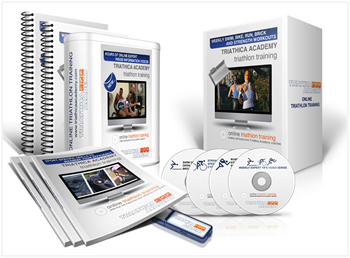 The support we have received for Triathica over the past year has been great. I appreciate every bit of it!
The support we have received for Triathica over the past year has been great. I appreciate every bit of it!
So what’s next for Triathica?
I’ve written about it several times but I have to say that I’m getting very excited about our new business model. My partner in the Triathica Academy, Oguz, showed me the beta version of our new website last week. It really looks great!
So what is it?
The Triathica Academy is going to take online triathlon training to an entirely new level than ANYONE has ever seen. We are going to be offering a monthly subscription service that will provide the triathlete all of the resources they need to complete their first triathlon or reach their goals of qualifying for Kona.
The core component of the Triathica Academy is the weekly workouts. We’re going to provide weekly swim, bike, run and resistance training workouts that contain a ton of detail. The swim, bike and run workouts will include markers for heart rate and rating of perceived exertion (RPE) so when the athlete does the workout again later they will be able to see their improvement.
Additionally, the Triathica Academy will provide lots of other useful information. We’ve already shot several informative videos with various experts that are sure to help subscriber’s performance.
We’ll also have a newsletter, blog and chat. It really is exciting and I think you’re going to love it.
And again, thank you all for your support!
Cheers!
MAINTAINING YOUR FORM
Ron Saetermoe
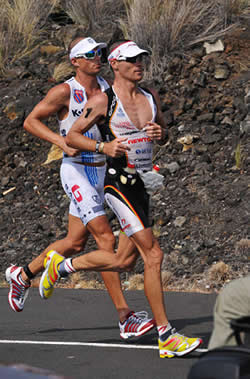 Excellence in athletics has a lot to do with your form. And while perfect form is impossible to achieve it is something we all need to strive for on the swim, bike and run.
Excellence in athletics has a lot to do with your form. And while perfect form is impossible to achieve it is something we all need to strive for on the swim, bike and run.
It is possible to do well in triathlon even though you don’t have great form, however. Some folks make up for their form in other ways such as their strength or determination.
Russ Jones is one of those guys. While my form is far from perfect it is far better than Russ’. The thing is that when Russ and I race together we’re usually getting out of the water at about the same time.
I remember Strawberry Fields sprint in 2007. The surf was quite high that day which is usually a good thing for the stronger swimmers. On this day, however, Russ came out of the water just behind me and passed me on the beach run into transition. How’d he do it?
In Russ’ case it’s all about determination. You see, when he attacks a race he’s going all-out in each of the segments. He’s going at 100% on the swim and doesn’t even think about the bike until he’s riding. So while I “should” have beaten him, he actually beat me by two seconds.
Here’s the difference, if you can race at 85% of your maximum effort you’ll have more energy for the events that follow. Not everyone can go at 100% for an entire race, especially the longer stuff. That’s why your form is so important.
The swim is perhaps the event that depends the most on good form. You can usually tell whether a swimmer has good or poor form pretty quickly. They’re movements are fluid like they’re hardly working at all. The body rotation is excellent, their arms are reaching way out there and their “catch” is nice and shallow.
I think the run is the second most important to concentrate on. There is a lot of debate on what good form looks like for the run but bad form is easy to spot. Some say a forefoot strike is best while others say mid-foot is best. Others say a heel strike is fine. Frankly, I don’t know what’s best. There are so many opinions about it that it’s impossible to know.
I don’t know the guy, but the winner in the M50-54 age group at the OC Duathlon has the goofiest running form I’ve ever seen . . . but he did win. Again, while form is important, it’s not everything.
Generally, the best runners have fluid movements (just like swimmers). They don’t look like they’re working that hard, but they are going fast. They generally have their hands high and their heads don’t bounce much.
And while cycling form is perhaps the least important, it is still crucial because about 50% of any distance race is about the bike. Good form on the bike starts with a good bike fit. Again, there are lots of schools of thought here but here’s my take . . .
First, I think your bike position can be more aggressive (more forward in the saddle and back flat) for the shorter race. However, trying to do an Ironman in this same position might be impossible because it’s so painful to your back and neck. So, while position is important, comfort is just as important.
The other thing I notice about the best cyclists is that there isn’t a lot of body movement. My pal Larry Davidson has excellent form. I really noticed it a couple years ago at the Desert Triathlon as he blew by me. I’m working like crazy and my body is bouncing up and down and moving back and forth. Larry’s going faster than me and there’s no body movement. His legs are turning over but his body is perfectly still and his arms and legs are tucked in tightly.
So the place to start is to get someone to look at your form and then practice it. Yes, I hate drills too, but “perfect practice makes perfect.” And during your workouts really concentrate on your form to make sure you hold your form even as you tire or exert yourself. I think about it the most when I’m swimming. When I’m doing my speed intervals I’m thinking about my body position, my hand entry, even what my feet are doing.
If you want to get faster you need to be constantly working on your form. Get some help and you’ll get there.
ACHES AND PAINS
Ron Saetermoe
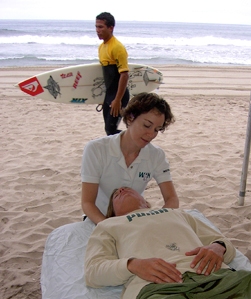 It’s funny but the less I workout the more pain I seem to have. Why is that?
It’s funny but the less I workout the more pain I seem to have. Why is that?
I just finished my first week (of two) of taperinig for Ironman 70.3 Hawaii and my training volume is down about 30% from my peak weeks. I’m really enjoying the extra time for doing all of the non-triathlon stuff but I’ve got all these aches and pains that weren’t there before.
It could be that I’m spending some of my extra time contemplating my belly button or it could just be nerves. Don’t know, but I’m pretty sore right now.
No matter, I’m going to go see my favorite massage therapist, Kathy Flippin of Dynamic Touch in Costa Mesa (www.dynamictouchmassage.com / 714.345.7188). I know Kathy’s magic hands will fix me right up.
I’ve experienced this phenomenon before so I’m not worried. It’s like Faris Al Sultan said once before he won the Ironman World Championships (paraphrasing) “Everyone has a little problem here and a sore muscle there, but when the gun goes off you are a 100% racing machine.”
It’s true you know. Starting in December 2009, I haven’t done a proper taper for any of my races. My goal is to concentrate on my training more than my racing and just use the races as quality training days. So far it seems to be working although I’ll e the first to admit that my racing performance is surprisingly good – even going into my races fatigued.
My pal Russ Jones actually warned me about tapering too much before my Hawaii race because I’ve done so well without tapering. The thing is, I know my body pretty well by now and know I’ll do better with a taper.
So if you’re in taper mode and notice all kinds of aches and pains, consider it normal. You’re in good company.
Cheers!
RACE REPORT: OC DUATHLON
Ron Saetermoe
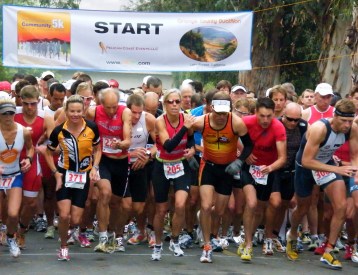 I’ve never been a big fan of the duathlon because my strongest event has always been the swim. But just to give it a shot I did the OC Duathlon last year just for kicks, and training.
I’ve never been a big fan of the duathlon because my strongest event has always been the swim. But just to give it a shot I did the OC Duathlon last year just for kicks, and training.
Getting on the bike AFTER a RUN was something I never practiced for (I have since, however) so it was a little weird last year. I felt like I had a good race (for me) and finished 6th in my age group with a 1:51:57. Not too shabby.
So this year I was going into the race with higher expectations but didn’t do any tapering for it whatsoever since this was really just an intense training day for me. Funny how we still expect more even though we do less preparation! And I KNOW it’s not just me!
I’m up at 4:00 a.m. and jump into my racing clothes and sweats and grab breakfast. English muffin with peanut butter and jam, glass of OJ and cottage cheese with blueberries and walnuts. Same thing I eat every race morning. I think I over did it this morning though because I felt really heavy.
Made my way to the race site and got a spot near the end of the bike rack – the end near the start/end chute. Used the porta potty a couple times and chatted up some of the other racers. No pressure!
I told my buddy Russ Jones to watch for me because I had him in my sights. His comment? “Sure Ron.” He knows me too well to be worried. We’re in the same age group again so I know when I race against him the BEST I can hope for is 2nd unless he flats. Heck, even if he does flat I’ll still probably come in 2nd.
The morning was cool. A perfect day to race. And plenty of friends racing too. It was going to be fun.
The run starts out downhill so it was fast. My first mile was 6:02! Whoa, big fella, you’re not an 18:00 5k guy! The next couple miles were considerably slower. I could see my pals Russ and Scott Calendar up ahead. No way I’m going to try to go with them.
My goal was to press hard on the bike. At the Californian 70.3 I managed to average 192 watts for the entire 56 miles so my goal today was to go 200. Sounds easy, doesn’t it.
I did go hard and managed to pass more riders than those that passed me. I saw my pals Dave Aronne and Stefani McMillen. I’m pretty slow up hills but hold my own in the flats and no one passes me on the downhills. My goal is to try to keep my wattage within a range no matter what the terrain.
The bike went well and I managed to average 198 watts. Only 1% less than my goal.
If you’ve never done a duathlon before you don’t know how much the second run sucks! Most people, including me, go out too hard on their first 5K and don’t hold enough in reserve for the second 5K. It’s fun to look at the disparity between the first and second 5K times. Most are a minute or more different.
The 2nd 5K was the same fast start as the first 5K, which my legs really appreciated. My pace was slower but still under 7:00 which is still good for me. My legs felt like rubber and my heartrate was climbing.
Since the run was an “out and back” you get to see a lot of the other athletes out there. Good old Stan Gertler was still yelling words of encouragement to everyone he knows. He’s a great sport!
That last ½ mile really hurts because you’re toast anyway and it’s uphill. I passed Pete Kobrick who was the race’s official bike mechanic. He yelled out “Good job Ron. No one even close behind you.” That’s good, because I’m too tired to look . . . or care, at the moment!
I was very pleased with my race and finished a predictable 2nd behind Russ. 4:27 faster than last year. Cool!
Here are some of the times from my mates:
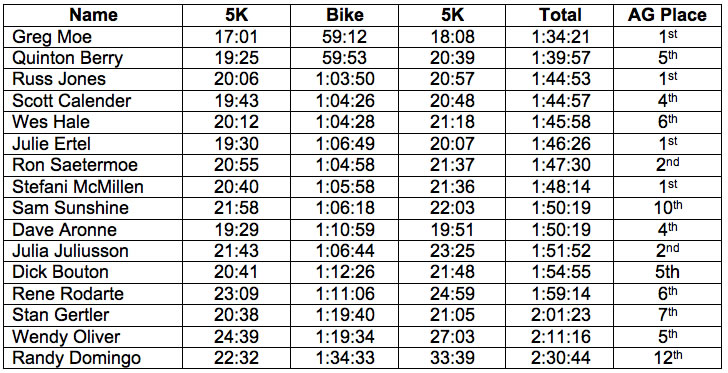
THE BIG BUILD UP
Ron Saetermoe
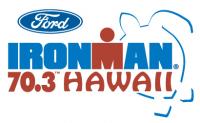 I’m just about two weeks away from my first “A” race of the season: Ironman 70.3 Hawaii. I didn’t have this race on my original schedule but since I did so well at the Ironman 70.3 California I figured I’d add this race to try to qualify for Kona.
I’m just about two weeks away from my first “A” race of the season: Ironman 70.3 Hawaii. I didn’t have this race on my original schedule but since I did so well at the Ironman 70.3 California I figured I’d add this race to try to qualify for Kona.
So this is the “big build up” as well as the “taper.” It’s a build up because all of the excitement and emotion before your really big race. I’m already starting to pack. I’ve had my bike checked out once, and will do so again when I leave it at Edge Cyclesports for TriBikeTransport to pick up. I’m double-checking my flights and hotel accommodations. Check, check, check!
No sleepless nights yet but there will be as we get closer to race time. I get into Kona on Thursday, June 3rd. Since the race is Saturday I’ll do my really big carbo-loading Thursday night. For some reason I just don’t race well when I’ve eaten a big meal the day before a race.
I’ve checked in with Dr. Sam Sunshine about his advice. Increase the salt intake a week prior to the race and drink lots of fluids a couple days before. Check!
I’ve been to the website numerous times to check on who’s racing and then gone to Athlinks to see what their race results have been. Check!
I’ve also invited Oguz my partner in the Triathica Academy and my 15-year old son to come along with me so I’ve had to revise the travel plans. Check!
I’ve had lunch with Al Gaspari, a great age group competitor to discuss his experience at the same race two years ago. I’ve also called Kirk Matkin and asked for his advice as he’s done the race numerous times. Check!
Frankly, it’s all a bit exhausting! After all this I think the race will be the easy part.
The best you can do is just check and recheck everything because this will help prevent an over stressed situation come race day. Be sure to taper appropriately and rebuild the muscles you’ve torn down from the previous training.
Two weeks left. Can’t wait!
Cheers!
GETTING SERIOUS ABOUT YOUR FITNESS
Ron Saetermoe
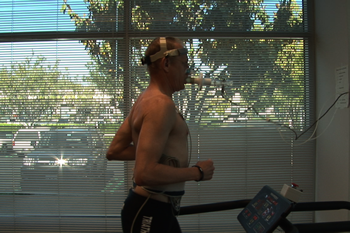 As I said in my previous article, I don’t think you need to get serious about triathlon to have fun. However, if you really want to go to the far reaches of your health and fitness you need to go see Dr. Herman Falsetti.
As I said in my previous article, I don’t think you need to get serious about triathlon to have fun. However, if you really want to go to the far reaches of your health and fitness you need to go see Dr. Herman Falsetti.
I first learned of Dr. Falsetti years ago when he did a short presentation at an Orange County Triathlon Club meeting. A soft-spoken man, his persona doesn’t reveal the expertise he really possesses.
He is a well-known authority in the field of sports medicine and a board certified cardiologist and the one many of the world’s top triathletes have relied on for decades. And while he doesn’t like to talk about his may high-profile clients his walls are littered with photos of people like Lance Armstrong.
I hadn’t been back to see Dr. Falsetti since 2006 mostly because my insurance doesn’t pay for his services. However, I strongly recommend you call his lovely assistant Carrie Gillett to see if yours does. My good friend and fellow triathlete K.C. Heidler’s insurance does cover his so he’s there every quarter.
So what can you expect? Carrie will check your height and weight and Dr. Falsetti will take some blood. I never even felt the needle going in!
After that they’ll hook up about 10 electrodes and have you rest on a table for a few minutes to get your resting heartrate. Note: It’s also a good idea to check your resting heartrate before your appointment for reference.
After that, let the fun begin! They have two tests to choose from: the bike or the treadmill. I chose the treadmill because I can get my heartrate up higher. You then climb on to your chosen device of pain and you’re off.
I’m not sure how the routine goes for the bike but the treadmill starts off very slow. About half way though each interval Dr. Falsetti’s assistant will ask you your level of pain on a 10-point scale. Then every two minutes the treadmill speeds up. Eventually the speed maxes out. Then the fun really begins! The elevation of the treadmill keeps increasing until you have to stop.
Based on the information he gathers he can tell you what your VO2 Max is as well as your training zones. It’s really great stuff and might help you reach the pinnacle of your fitness.
You can find his website here.
HAVE FUN
Ron Saetermoe
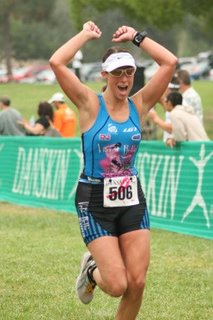 Non-triathletes don’t get how training for and racing triathlon can be fun. You get up at all hours of the morning to train and sweat your brains out. You wear funky clothes and spend thousands of dollars on bikes and other equipment. Silly isn’t it?
Non-triathletes don’t get how training for and racing triathlon can be fun. You get up at all hours of the morning to train and sweat your brains out. You wear funky clothes and spend thousands of dollars on bikes and other equipment. Silly isn’t it?
For me, the fun I get from the sport, has evolved. I think it does for a lot of people. In the beginning it was just a kick to get out and finish a race. You can see the same looks on the faces of the age-groupers that finish in the bottom 50% as well. They don’t care about their time, they were just happy to get out there and do it.
But as I have taken my racing to new levels my idea of “fun” has evolved into something else. I now “hang” with some very competitive men and women who inspire me. In addition, I train a lot longer and harder. And, when it comes to my equipment, I demand the best.
Just this morning, in fact, I just bought a Tyr Sayonara Swimskin that I will use for exactly one race! You see, wetsuits aren’t allowed at the Hawaii Ironman 70.3 but swimskins are. And, since swimskins will be illegal in non-wetsuit races after September 1, 2010, I won’t use it ever again. Anyone in the market for a slightly used Tyr Sayonara after June 5th?
But I really don’t think having fun in the sport of triathlon requires you to continuously improve your times or position within your age group. I think many people just like the triathlon lifestyle and the people in it. It inspires people to stay active and healthy.
I know several longtime triathletes that like the sport because it gives them an excuse to travel. They’ve been to many races all over the world and don’t seem to really care if they qualify for Kona . . . ever.
I love the line in “Arthur” with Dudley Moore where he’s drunk again and he’s saying to his hooker escort for the evening “Isn’t fun the best thing to have?” Yep, it’s pretty great.
If you’re not having fun in the sport, no matter how you place, it’s time to move on to something else. Me? I’m having the time of my life!


